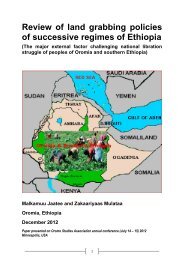freakonomics
freakonomics
freakonomics
Create successful ePaper yourself
Turn your PDF publications into a flip-book with our unique Google optimized e-Paper software.
7–7 WRESTLER’S PREDICTED WIN<br />
PERCENTAGE AGAINST 9–5<br />
OPPONENT<br />
47.2 73.4<br />
7–7 WRESTLER’S ACTUAL WIN<br />
PERCENTAGE AGAINST 9–5<br />
OPPONENT<br />
As suspicious as this looks, a high winning percentage alone isn’t enough to prove that a<br />
match is rigged. Since so much depends on a wrestler’s eighth win, he should be<br />
expected to fight harder in a crucial bout. But perhaps there are further clues in the data<br />
that prove collusion.<br />
It’s worth thinking about the incentive a wrestler might have to throw a match. Maybe he<br />
accepts a bribe (which would obviously not be recorded in the data). Or perhaps some<br />
other arrangement is made between the two wrestlers. Keep in mind that the pool of elite<br />
sumo wrestlers is extraordinarily tight-knit. Each of the sixty-six elite wrestlers fights<br />
fifteen of the others in a tournament every two months. Furthermore, each wrestler<br />
belongs to a stable that is typically managed by a former sumo champion, so even the<br />
rival stables have close ties. (Wrestlers from the same stable do not wrestle one another.)<br />
Now let’s look at the win-loss percentage between the 7–7 wrestlers and the 8–6<br />
wrestlers the next time they meet, when neither one is on the bubble. In this case, there is<br />
no great pressure on the individual match. So you might expect the wrestlers who won<br />
their 7–7 matches in the previous tournament to do about as well as they had in earlier<br />
matches against these same opponents—that is, winning roughly 50 percent of the time.<br />
You certainly wouldn’t expect them to uphold their 80 percent clip.<br />
As it turns out, the data show that the 7–7 wrestlers win only 40 percent of the rematches.<br />
Eighty percent in one match and 40 percent in the next? How do you make sense of that?<br />
The most logical explanation is that the wrestlers made a quid pro quo agreement: you let<br />
me win today, when I really need the victory, and I’ll let you win the next time. (Such an<br />
arrangement wouldn’t preclude a cash bribe.) It’s especially interesting to note that by the<br />
two wrestlers’ second subsequent meeting, the win percentages revert to the expected<br />
level of about 50 percent, suggesting that the collusion spans only two matches.<br />
And it isn’t only the individual wrestlers whose records are suspect. The collective<br />
records of the various sumo stables are similarly aberrational. When one stable’s<br />
wrestlers fare well on the bubble against wrestlers from a second stable, they tend to do<br />
especially poorly when the second stable’s wrestlers are on the bubble. This indicates that<br />
some match rigging may be choreographed at the highest level of the sport—much like<br />
the Olympic skating judges’ vote swapping.<br />
No formal disciplinary action has ever been taken against a Japanese sumo wrestler for<br />
match rigging. Officials from the Japanese Sumo Association typically dismiss any such<br />
charges as fabrications by disgruntled former wrestlers. In fact, the mere utterance of the









